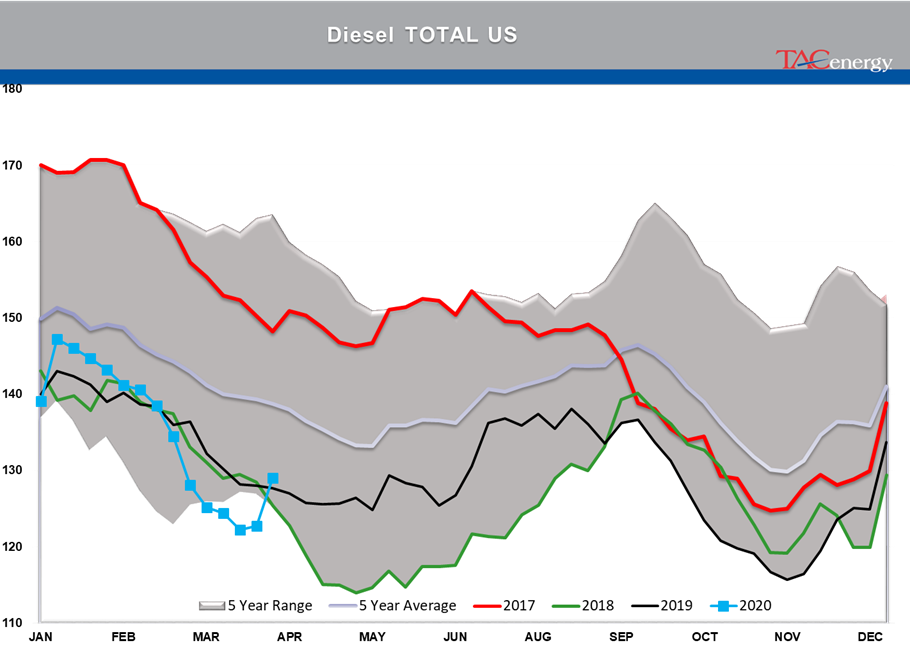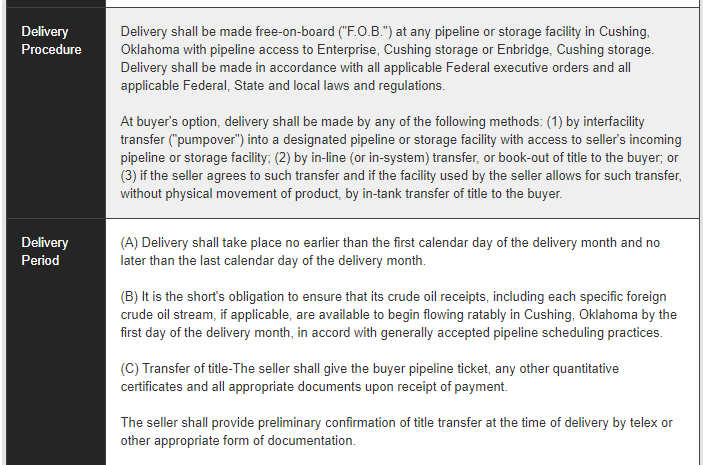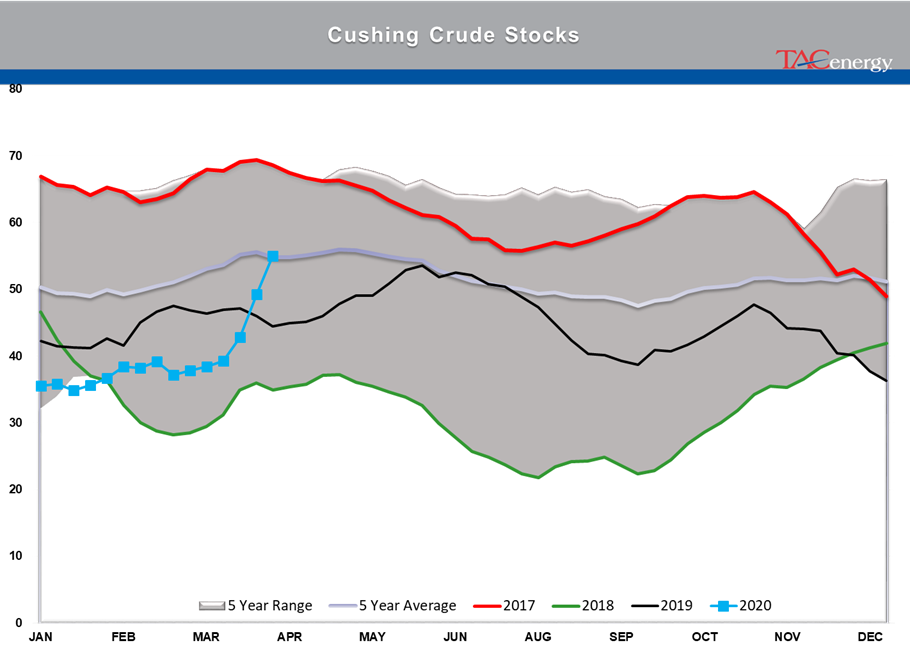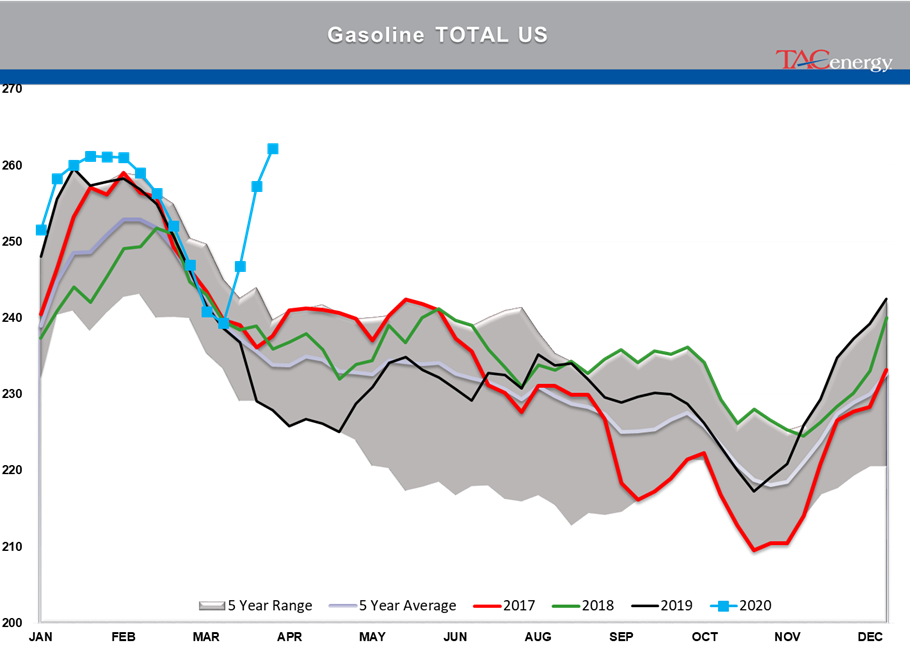How Long Will This Crude Chaos Last?

May WTI is up $34/barrel this morning, the biggest rally in the 37 year history of the NYMEX contract. May WTI futures are up $34 this morning, and yet are still trading at a negative $3.50/barrel.
This ultimate lesson in the realities of futures contracts tied to physical delivery was provided in Monday’s epic 350% percent price drop, when the May WTI contract (which expires today) not only traded negative for the first time ever shortly after 1 p.m. central, but then traded at negative $40/barrel less than 20 minutes later.
Storage tanks at Cushing, OK – the delivery hub for the WTI contract - are on pace to reach maximum capacity in about a month – right when the May WTI contract would be due to deliver – meaning buyers became scarce as their ability to hold any additional barrels ran out and sellers were forced to pay in order to find someone to take those contracts off their hands. I’m sure there are plenty who will disagree with this point, but it seems that the negative value are a sign of free markets behaving as they should, and the physical delivery tied to futures contracts the ultimate tool to keep a market from being easily manipulated.
It’s likely we may never know who was caught in that unenviable position of paying nearly $1/gallon to sell crude oil futures, but it is certainly possible that the move may have caused, or perhaps was caused by, bankrupt companies being forced to liquidate positions. Perhaps a former FBI director will be hired to tell the tale someday like we saw in the aftermath of the 2008 debacle.
If you’re wondering how long this crude chaos may last, take a look at the forward curve chart below, and see the relative lack of reaction in values six months and more in the future, which also helps explain the minimal reaction in major oil company stock prices during Monday’s meltdown.
Today’s heavy selling in RBOB and ULSD seems to be at least in part the aftershocks of the WTI crash, with market players waking up to the reality that negative values can and do happen, and with U.S. gasoline inventories at record highs, there is a chance we could see a lack of storage options continuing to wreak havoc on both physical and futures prices until the country reopens.
Diesel prices meanwhile have reached a 17-year low overnight, caught up in the larger petroleum price swoon, even though U.S. diesel stocks are near the low end of their seasonal range. In some U.S. markets, we've already seen the lack of gasoline space creating diesel shortages due to pipeline and tankage constraints, and it appears that trend is likely to continue.
Click here to download a PDF of today's TACenergy Market Talk.
Latest Posts
Gasoline Futures Are Leading The Way Lower This Morning
The Sell-Off Continues In Energy Markets, RBOB Gasoline Futures Are Now Down Nearly 13 Cents In The Past Two Days
Week 15 - US DOE Inventory Recap
Prices To Lease Space On Colonial’s Main Gasoline Line Continue To Rally This Week
Social Media
News & Views
View All
Gasoline Futures Are Leading The Way Lower This Morning
It was a volatile night for markets around the world as Israel reportedly launched a direct strike against Iran. Many global markets, from equities to currencies to commodities saw big swings as traders initially braced for the worst, then reversed course rapidly once Iran indicated that it was not planning to retaliate. Refined products spiked following the initial reports, with ULSD futures up 11 cents and RBOB up 7 at their highest, only to reverse to losses this morning. Equities saw similar moves in reverse overnight as a flight to safety trade soon gave way to a sigh of relief recovery.
Gasoline futures are leading the way lower this morning, adding to the argument that we may have seen the spring peak in prices a week ago, unless some actual disruption pops up in the coming weeks. The longer term up-trend is still intact and sets a near-term target to the downside roughly 9 cents below current values. ULSD meanwhile is just a nickel away from setting new lows for the year, which would open up a technical trap door for prices to slide another 30 cents as we move towards summer.
A Reuters report this morning suggests that the EPA is ready to announce another temporary waiver of smog-prevention rules that will allow E15 sales this summer as political winds continue to prove stronger than any legitimate environmental agenda. RIN prices had stabilized around 45 cents/RIN for D4 and D6 credits this week and are already trading a penny lower following this report.
Delek’s Big Spring refinery reported maintenance on an FCC unit that would require 3 days of work. That facility, along with several others across TX, have had numerous issues ever since the deep freeze events in 2021 and 2024 did widespread damage. Meanwhile, overnight storms across the Midwest caused at least one terminal to be knocked offline in the St. Louis area, but so far no refinery upsets have been reported.
Meanwhile, in Russia: Refiners are apparently installing anti-drone nets to protect their facilities since apparently their sling shots stopped working.
Click here to download a PDF of today's TACenergy Market Talk.

The Sell-Off Continues In Energy Markets, RBOB Gasoline Futures Are Now Down Nearly 13 Cents In The Past Two Days
The sell-off continues in energy markets. RBOB gasoline futures are now down nearly 13 cents in the past two days, and have fallen 16 cents from a week ago, leading to questions about whether or not we’ve seen the seasonal peak in gasoline prices. ULSD futures are also coming under heavy selling pressure, dropping 15 cents so far this week and are trading at their lowest level since January 3rd.
The drop on the weekly chart certainly takes away the upside momentum for gasoline that still favored a run at the $3 mark just a few days ago, but the longer term up-trend that helped propel a 90-cent increase since mid-December is still intact as long as prices stay above the $2.60 mark for the next week. If diesel prices break below $2.50 there’s a strong possibility that we see another 30 cent price drop in the next couple of weeks.
An unwind of long positions after Iran’s attack on Israel was swatted out of the sky without further escalation (so far anyway) and reports that Russia is resuming refinery runs, both seeming to be contributing factors to the sharp pullback in prices.
Along with the uncertainty about where the next attacks may or may not occur, and if they will have any meaningful impact on supply, come no shortage of rumors about potential SPR releases or how OPEC might respond to the crisis. The only thing that’s certain at this point, is that there’s much more spare capacity for both oil production and refining now than there was 2 years ago, which seems to be helping keep a lid on prices despite so much tension.
In addition, for those that remember the chaos in oil markets 50 years ago sparked by similar events in and around Israel, read this note from the NY Times on why things are different this time around.
The DOE’s weekly status report was largely ignored in the midst of the big sell-off Wednesday, with few noteworthy items in the report.
Diesel demand did see a strong recovery from last week’s throwaway figure that proves the vulnerability of the weekly estimates, particularly the week after a holiday, but that did nothing to slow the sell-off in ULSD futures.
Perhaps the biggest next of the week was that the agency made its seasonal changes to nameplate refining capacity as facilities emerged from their spring maintenance.
PADD 2 saw an increase of 36mb/day, and PADD 3 increased by 72mb/day, both of which set new records for regional capacity. PADD 5 meanwhile continued its slow-motion decline, losing another 30mb/day of capacity as California’s war of attrition against the industry continues. It’s worth noting that given the glacial pace of EIA reporting on the topic, we’re unlikely to see the impact of Rodeo’s conversion in the official numbers until next year.
Speaking of which, if you believe the PADD 5 diesel chart below that suggests the region is running out of the fuel, when in fact there’s an excess in most local markets, you haven’t been paying attention. Gasoline inventories on the West Coast however do appear consistent with reality as less refining output and a lack of resupply options both continue to create headaches for suppliers.







